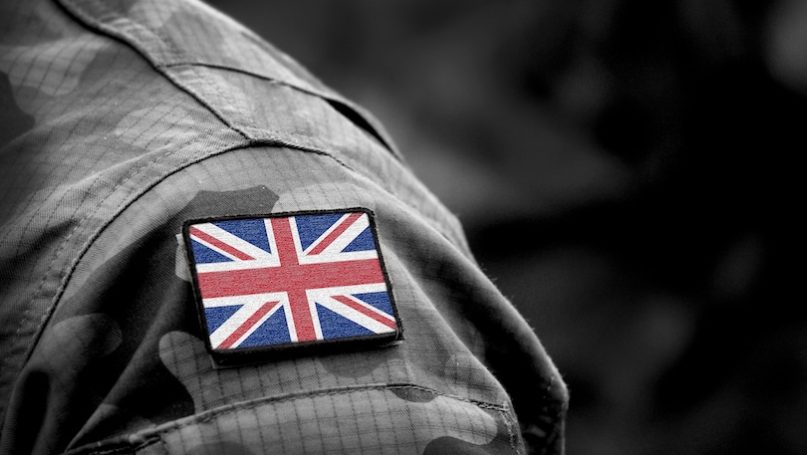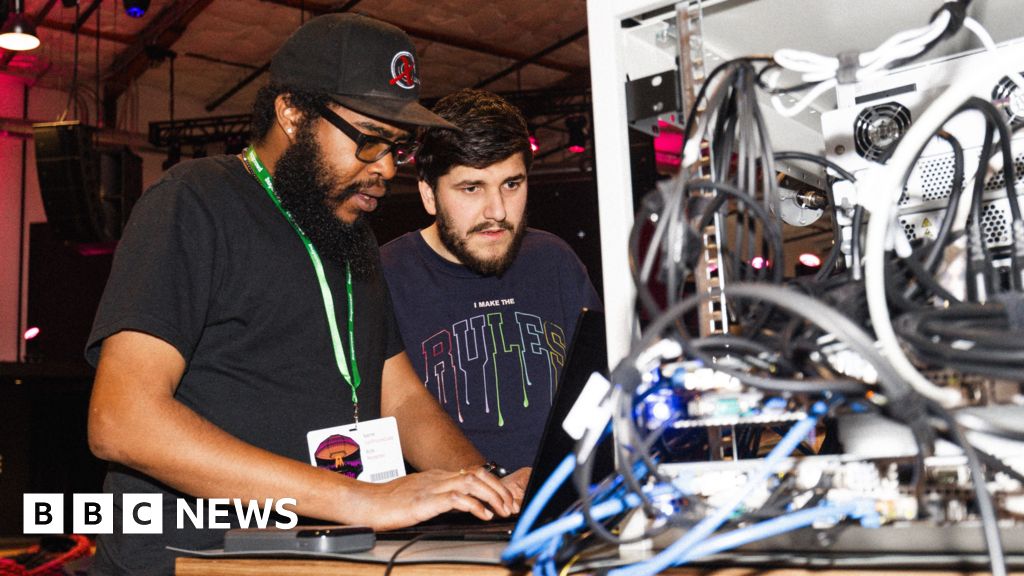
Bumble Dee/Shutterstock
Unless you are a member of the British armed forces or you know people in the military, you probably haven’t given much thought to how the institution deals with misconduct perpetrated by those within its ranks. Before I began researching the British military’s justice system, nor had I. My knowledge initially stemmed from what I had been taught at school about the First World War, anecdotes from friends and family who were in the military, TV shows, and news reports of soldiers committing serious crimes overseas. From this, I had pieced together that the British armed forces had their own police forces, court system, and detention facility and that this system dealt with offences that ranged from the comparatively minor – such as failing to turn up to a shift after a night spent drinking – to the more serious – for example, allegations of war crimes.
Initially, nothing had struck me as odd about the fact that the military had its own separate syBumble Deestem of justice. After all, much of what I have just mentioned speaks to offences that are exclusive to a military context in which the jurisdictional complexities of overseas deployments are further muddied by the violent nature of military work. What is more, the existence of a separate system of military justice is not distinct to the British context nor is it something new, having existed in some form for centuries. For many, the rationale is self-evident: military work is unparalleled, dangerous, and violent. In addition to “the unique nature of the Service environment”, there are two other important points to flag as well. First, there is a requirement under international humanitarian law for organised armed groups to be able to enforce discipline and to ensure compliance with the law. Second, military justice is portable (i.e. it can be taken overseas), meaning that service personnel cannot simply act with impunity if they are deployed to a setting where the domestic justice system is not human-rights-compliant.
While the system’s capacity to deal with offences taking place away from operational contexts is also recognised by scholars, the rationale most frequently provided for maintaining a separate system of justice nonetheless foregrounds a conception of the institution in which operational activities are the defining experience and ultimate purpose of all forms of military work.
When I began my research, I was curious about how the rights of service personnel were navigated in relation to these operational pressures. My initial reading had pointed me in the direction of the Military Court Centres as one of the spaces most deeply imbricated in the debate surrounding the rights of military personnel. Consequently, between 2021-2023, I conducted courtroom observations at one of the UK’s permanent Military Court Centres. Yet, of the 15 hearings I observed as part of this project, only four related to distinctly ‘military’ offences – the others involved charges of assault, battery, sexual assault, and rape, taking place in the familiar spaces of bars, swimming pools, bedrooms, and offices. The more I observed, the more curious I became about how these seemingly ‘non-military’ offences had come to be the concern of a military system of justice.
At the time of conducting this research (2021-2023) there was, and continues to be, mounting pressure on the military’s justice system to demonstrate its ability to effectively investigate and prosecute sexual offences and other ‘unacceptable behaviours’ perpetrated by military personnel against their colleagues. Indeed, scrutiny of the military’s responses to sexual offending has indicated that the system is characterised by low conviction rates, a lack of support provided to victim-survivors, and significant failures in the investigation of such offences. This has led to calls for cases of rape and serious sexual assault to be taken out of the military’s jurisdiction when committed in the UK.
In March 2024 following similar levels of scrutiny, the Canadian parliament introduced legislation to strip the military of its powers to investigate and prosecute all sexual offences committed by its personnel on domestic soil. In the UK however, only small concessions to the military’s jurisdiction over such offences have been made. Frequently, this is justified with reference to the civilian criminal justice system’s extant failings in responding to sexual violence. Yet, whether cases of sexual violence and other unacceptable behaviours belong in a military system of justice (or should be subsumed into the civilian system) was not the central focus of my research. Instead, I sought to examine what the daily workings of one of the military’s primary mechanisms used to respond to ‘unacceptable behaviours’ could tell us about how violence is conceived of and responded to by the institution, and what the implications of this were on the everyday lives of military personnel.
Ultimately, my research found that military exceptionalism works as a powerful ordering concept that regulates how violence by and against military personnel is made sense of by those within the Court Centre. Military exceptionalism is a concept used by Megan MacKenzie in her 2023 monograph, Good Soldiers Don’t Rape: The Stories We Tell About Military Sexual Violenceto refer to the supposedly “unique nature of military service, and the esteemed place that the military holds within society and the public imagination” (p.20). Military exceptionalism is shaped by ideals of ‘good militaries’ and ‘good soldiers’ – “which are constructed as necessarily white, masculine, exclusive, and reproduced through the regulation of sex and the exclusion of women and racialized groups” (p.9) – that enable the institution to be understood not only as special, but as accountable to different standards and laws when compared to the ‘civilian world’.
From the artwork that adorned the walls to the explicit statements that soldiers were more likely to be of ‘good character’ than civilians, the everyday operations of the Court Centre were oriented around assumptions of the innate goodness of the military institution. These allusions to institutional and individual virtue were accompanied by powerful material and discursive reminders of the Centre’s seemingly ever-present proximity to war. Indeed, throughout my research, conceptions of military work were primarily regulated through an understanding of the soldier’s proximity to operational duty, danger, and risk. In foregrounding highly destructive, armed violence as the defining, and timeless, character of military life, the temporal and spatial dynamics of the Court Centre emphasise the noble, self-sacrificial nature of military service. In so doing military personnel are figured as exposed to – but significantly not as perpetrators of – violence, thus framing the use of ‘uncontrolled’ violence by military personnel as something anomalous to good military service, something that ‘belongs elsewhere’, obscuring its centrality to sustaining the military institution and, more broadly, the liberal state. This was a jarring juxtaposition to the intimate stories of bodily violation that played out within the courtrooms themselves.
Moreover, through the presentation of the military justice system as one designed to serve a unique and exceptional institution, discussion of the harms of everyday violence were oriented away from the victim-survivors and attention was turned instead towards the impact of these offences upon the institution itself. Indeed, during the hearings, consideration was given to how sexual misconduct, and racial abuse might impact operational effectiveness and unit-cohesion. Rather than being framed primarily in terms of harm to the individuals involved in the case, the hearings located the offences within a broader landscape of threat in which the ‘cohesive and effective’ military institution itself is constituted as a potential victim of the offences (but notably not as complicit in the perpetration of such offences). In this light, the institution is able to demonstrate that it takes sexual violence and other ‘unacceptable behaviours’ seriously; it is in its interest to adopt seemingly progressive policy measures such as a zero-tolerance approach to sexual offending. However, as Meghana Nayak reminds us, sexual violence and other ‘unacceptable behaviours’ matter to the military, but only insofar that they interfere with the institution’s operational readiness.
Yet, during my fieldwork, witness testimony and the victim impact statements read aloud in the court room troubled the neat stories of the institution as a progressive, exceptional employer, one that was able to deal effectively with sexual violence and other ‘unacceptable behaviours’. For example, the words of women who had experienced rape and sexual assault conveyed how, even after a guilty verdict had been returned, sexual violence was still variously experienced as an enduring time of memory, future worry, lasting harm, and everyday coping. Their words emphasised the institution’s continued failure to respond appropriately to such offences, leaving traces of unruly stories that did not fit neatly into categories of guilt/innocence, military/civilian, progress/failure, closure/uncertainty.
My observations reveal the fragile and illusory nature of the efforts that underpin the institution’s promise to tackle sexual violence and other unacceptable behaviours, but the Military Court Centre is only one small part of the military’s justice system. As such, there is a need for further in-depth, qualitative, and critically informed research on other elements of this system, for example the summary offences process or the complaints system. Moreover, given the difficulties in conducting research with military personnel, in my time at the Court Centre I did not engage directly with individuals who have experienced sexual violence and other ‘unacceptable behaviours’. As such, the question of how military justice is experienced, or made sense of, by those within these systems remains open.
Further Reading on E-International Relations
About The Author(s)
Hannah Richards is a Research Associate at the University of Bristol and holds a PhD from Cardiff University, UK. She is working on the ERC/UKRI funded project, Powerful Perpetrators: a five-year project looking at sexual misconduct and abuse perpetrated by professionals, and the regulatory and administrative justice mechanisms used to investigate and sanction their behaviour. Her primary research interests lie at the intersections of feminist international relations, critical military studies, and political/legal geographies – underpinned by a curiosity about how ideas of justice, violence, and accountability are navigated within powerful and trusted institutions.
Editorial Credit(s)
Anton Bronfman
Before you download your free e-book, please consider donating to support open access publishing.
E-IR is an independent non-profit publisher run by an all volunteer team. Your donations allow us to invest in new open access titles and pay our bandwidth bills to ensure we keep our existing titles free to view. Any amount, in any currency, is appreciated. Many thanks!
Donations are voluntary and not required to download the e-book - your link to download is below.

 Movie
Movie 2 months ago
101
2 months ago
101 




![Presidents Day Weekend Car Sales [2021 Edition] Presidents Day Weekend Car Sales [2021 Edition]](https://www.findthebestcarprice.com/wp-content/uploads/Presidents-Day-Weekend-car-sales.jpg)



 English (United States)
English (United States)